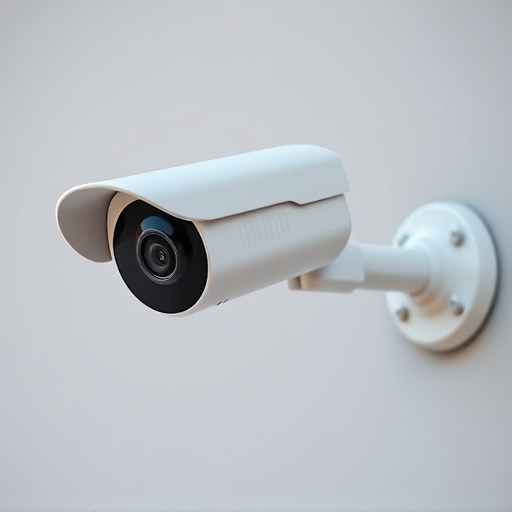Dummy cameras with blinking lights are affordable, effective security solutions for homes and businesses, mimicking real surveillance cameras with motion sensors and LED lighting. They deter intruders by simulating constant monitoring without capturing or transmitting footage, making them a cost-efficient choice. Strategic placement is key, focusing on lighting conditions, entry points, walkways, and areas of interest while adhering to legal and privacy implications, including compliance with local regulations and data protection laws.
“Uncover the power of dummy cameras with blinking lights as a deterrent for potential intruders. This comprehensive guide explores the growing trend of security camera shells designed to mimic real surveillance equipment. From understanding their basic functionality to delving into the benefits, design variations, and legal considerations, we dissect why these ‘dummy’ cameras are becoming essential tools for home and business security without compromising privacy. Enhance your safety measures with this innovative technology.”
- Understanding Dummy Cameras: A Brief Overview
- Benefits of Using Blinking Light Security Cameras
- Types of Dummy Camera Designs and Features
- Installation and Placement Considerations
- Legal and Privacy Aspects to Keep in Mind
Understanding Dummy Cameras: A Brief Overview
Dummy cameras with blinking lights are an effective deterrent in enhancing home and business security. These devices mimic the appearance of active surveillance cameras, while internally featuring a simple motion sensor and LED lighting system. The strategic placement of these dummy cameras can significantly deter potential intruders, as their presence alone suggests constant monitoring.
Unlike traditional security cameras, dummy models do not capture or transmit any video footage, making them ideal for those seeking an affordable way to increase safety without the associated costs of full-fledged surveillance systems. Blinking lights further emphasize the camera’s operational status, adding another layer of psychological protection and deterrence.
Benefits of Using Blinking Light Security Cameras
Blinking lights on security cameras, often incorporated into dummy cameras with blinking lights, offer several advantages that enhance their effectiveness as deterrents and monitoring tools. One of the key benefits is their visual impact. The intermittent blinking pattern creates a sense of movement, even when no actual activity is occurring. This can deter potential intruders, as it appears that the camera is actively monitoring the area at all times.
Additionally, these lights serve as a reliable indicator for both property owners and surveillance teams. The visible blinking signals that the camera is operational, encouraging a stronger sense of security. Furthermore, the light patterns can provide valuable visual cues during recordings, helping to identify and track movements, making them useful in forensic analysis and enhancing overall surveillance capabilities.
Types of Dummy Camera Designs and Features
Dummy cameras with blinking lights are a popular choice for enhancing home and business security. These devices simulate real cameras, deterring potential intruders by creating the perception of constant surveillance. They come in various designs, each offering unique features to suit different needs. Some models feature vibrant LED lights that mimic the look of a functional camera, while others have more subtle glows, designed to blend into their surroundings.
The design options include realistic cameras with detailed housing and lenses, as well as minimalist shells that mount discreetly on walls or ceilings. Advanced models may incorporate motion sensors, causing the lights to flicker or activate when movement is detected, further enhancing the deterrent effect. These dummy cameras are an affordable and effective way to boost security without breaking the bank.
Installation and Placement Considerations
When installing a security camera shell with lights, whether it’s a standalone device or integrated into an existing system, strategic placement is key. Consider factors like lighting conditions – the Dummy Cameras With Blinking Lights should complement natural light for optimal visibility during the day and provide adequate illumination in low-light scenarios at night. Additionally, positioning near entry points, walkways, and areas of interest ensures maximum coverage. Think about potential blind spots created by obstructions like trees or furniture and arrange the cameras accordingly to maintain a comprehensive view.
Mounting height is also critical. Security cameras with lights should be positioned high enough to deter potential intruders but not so high that they become difficult to adjust or are obscured by ceiling fixtures. Flat, secure mounting surfaces are essential for stability and to prevent camera tampering. Always follow manufacturer guidelines for recommended installation practices and ensure compliance with local building codes and regulations.
Legal and Privacy Aspects to Keep in Mind
When installing security camera shells with lights, especially those mimicking real cameras with blinking lights, it’s crucial to understand the legal and privacy implications. In many regions, using dummy cameras is regulated by laws governing surveillance and data protection. While they may be marketed as decorative or for deterrence, their visual similarity to real security equipment can raise concerns among neighbors and local authorities.
Homeowners should familiarize themselves with local regulations on camera placement, especially in areas visible from public spaces. Additionally, consider the ethical implications of monitoring neighbors’ activities through these dummy cameras. Respecting privacy rights is paramount, and using such devices without consent can lead to legal repercussions. Always ensure compliance with data protection laws and respect for personal privacy to avoid potential lawsuits or penalties.
Dummy cameras with blinking lights offer a cost-effective and discrete security solution, providing both visual deterrence and peace of mind. By understanding their benefits, design variations, and legal considerations, homeowners can make informed choices to enhance home security without compromising privacy. These practical devices are an innovative way to navigate the world of home protection, ensuring safety in today’s digital era.
